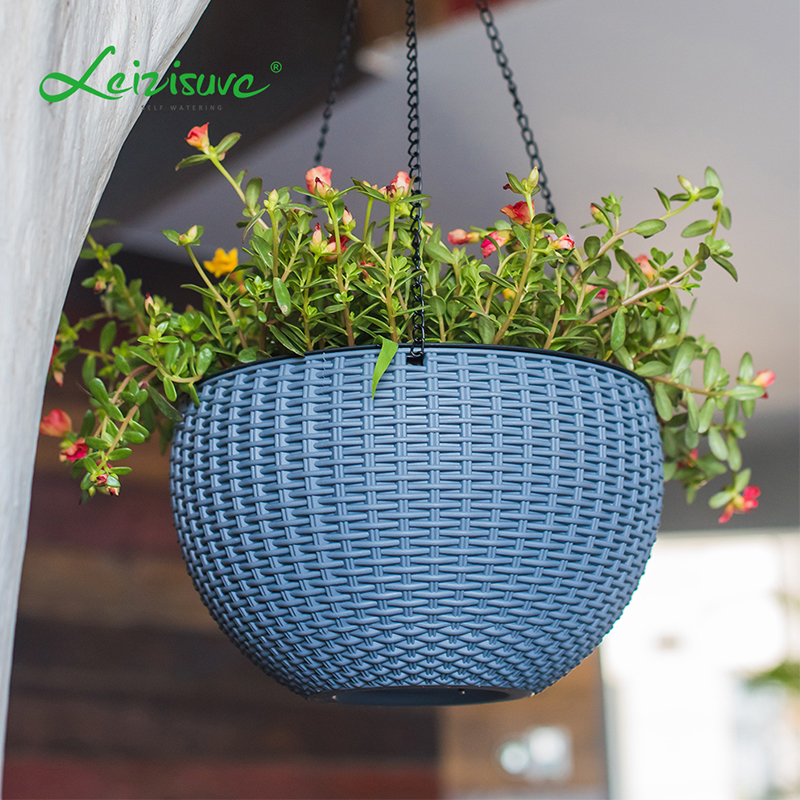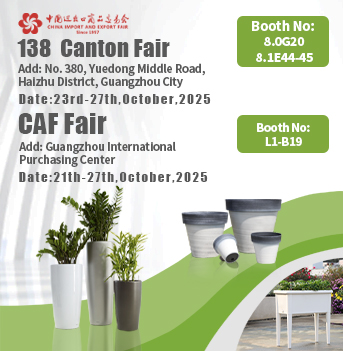Home gardens and outdoor spaces are evolving into areas that blend functionality with personal expression. The selection of Garden Pots Planters and Nursery Planter Pots plays an important role in creating displays that support healthy plants while offering visual appeal. For both home gardeners and commercial growers, choosing versatile pots contributes to efficient planting practices and easier maintenance.

Flexible Sizing and Practical Design
One of the commonly appreciated features of versatile nursery pots is the variety of sizes and shapes available. Different plant types, from herbs to young trees, require containers that fit their root systems and growth patterns. Shallow pots can be suitable for smaller ornamental plants or succulents, while deeper containers provide adequate space for root development in larger species.
Many Garden Pots Planters are designed with tapered sides that make transplanting easier. This shape reduces stress on roots when moving plants into bigger pots or outdoor beds. In addition, containers with smooth rims and reinforced bases can be handled and transported with less risk of damage to plants or pot structure.
Drainage remains a key design aspect. Properly placed holes or slits allow excess water to escape, preventing soil saturation and supporting healthier root conditions. When selecting planters, it can be helpful to consider how drainage features will perform in local weather conditions or under different watering schedules.
Material Choices for Durability and Visual Consistency
Selecting the right materials for Nursery Planter Pots supports both performance and appearance. Injection-molded plastics are often preferred for their balance of strength and light weight, making them suitable for repeated handling, watering, and exposure to sunlight. Many planters include UV stabilizers that help maintain their color and structural stability over time.
For projects focused on sustainability, recycled plastics or recyclable materials are increasingly available. These options align with environmental goals and can still meet functional needs. It is important to evaluate how material thickness and flexibility will perform in specific settings, particularly when pots are used in outdoor displays where temperature shifts and moisture are common.
Uniform materials and finishes also contribute to cohesive visual presentations in garden centers or retail environments. Consistent colors and textures create a clean look that supports product displays and makes it easier for customers to compare sizes and styles.
Adapt to different growing environments
Whether containers are used in home gardens, balconies or large outdoor landscapes, versatility means they can adapt to different growing needs. Stackable designs save storage and transport space, which is especially useful for businesses managing large inventories. Square and rectangular pots can make use of existing shelf or bench space, while round designs can enhance decorative effects.
Some pots have built-in handles or gripping areas, allowing users to easily move plants. This is especially important for large containers that can become heavy after watering. Clear labels or embossed markings can help identify pot sizes or match them to specific plants.
In climates with high rainfall or humidity, well-drained or well-ventilated containers can reduce the risk of waterlogging, thereby providing better growing conditions. Conversely, in arid regions, deeper pots help retain moisture longer and protect roots from heat stress.
Customize to meet specific needs
Even with standard models, many nurseries and retailers still have the option to customize. Adjusting the size, branding details or color scheme can help businesses make their products match their brand image and customer expectations. For example, adding a logo or a unique color can give a pot a certain advantage in a competitive retail environment.
When planning a custom order, it can be helpful to share details about the intended use, desired material properties, and order quantity. Early coordination can help clarify production timelines and reduce potential misunderstandings. Many suppliers can provide prototypes or samples before production begins to confirm design specifications.
Custom labels also have practical value, such as plant care instructions, recycling information, or details on the product's origin. These features can boost customer confidence and help communicate important product information.
Supports Healthy Growth and Ease of Care
Beyond appearance and branding, pots have a direct impact on the health and ease of care of your plants. Adequate root space, consistent moisture control, and sturdy structural support can all affect how a plant grows and the amount of maintenance it requires. For home gardening enthusiasts, having a pot that is easy to move and clean can make seasonal adjustments simpler and more convenient.
Retailers and nurseries also benefit from containers that retain their beauty over time. Pots that resist fading, cracking, or warping can help display plants in a more attractive way and boost sales by increasing customer confidence in the overall quality of the product.
Versatile pots are a practical foundation for many plant projects, whether growing vegetables, displaying flowers, or nurturing young trees. By carefully considering materials, design features, and operational requirements, commercial and home gardening enthusiasts can create systems that support healthy plant growth while enabling efficient workflows.

 English
English 日本語
日本語 Español
Español Deutsch
Deutsch عربى
عربى

